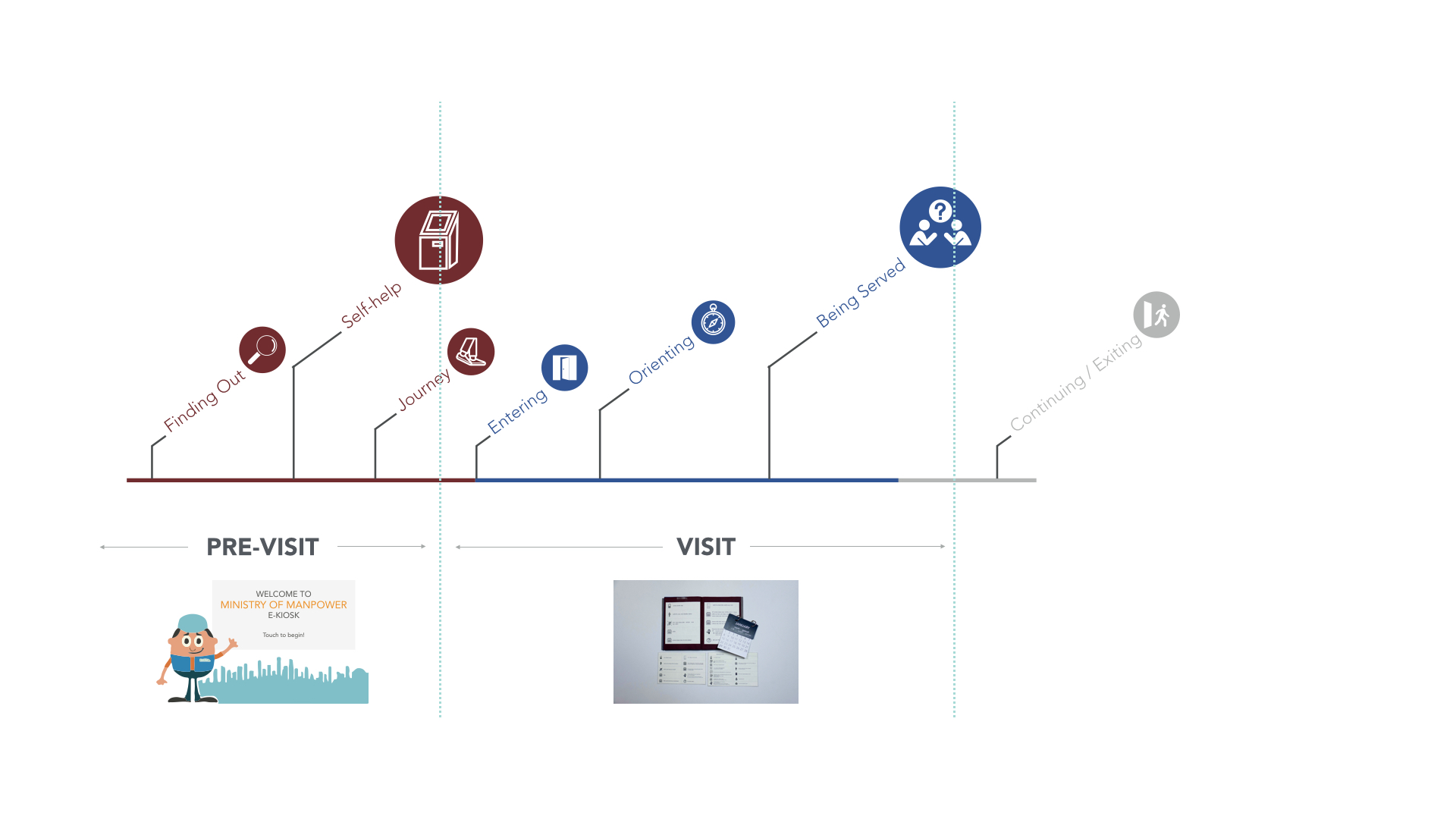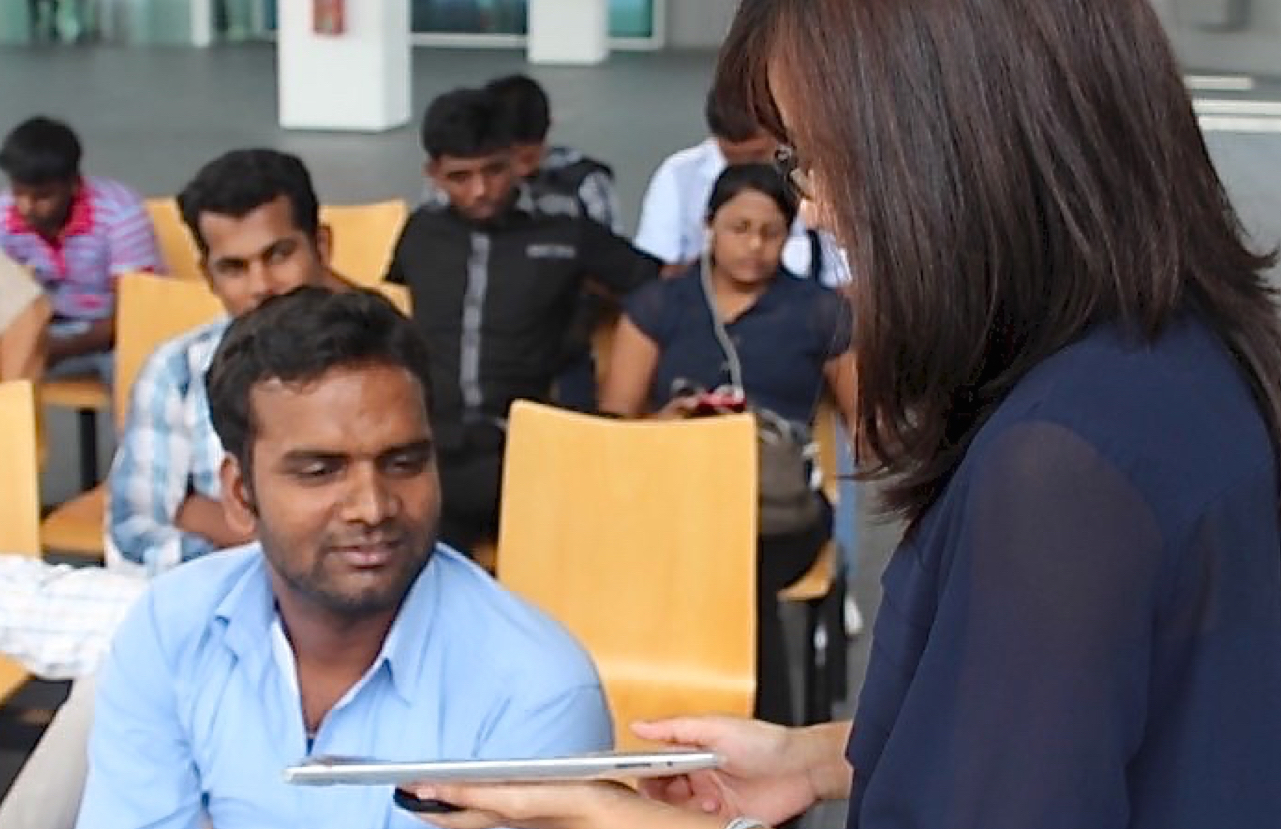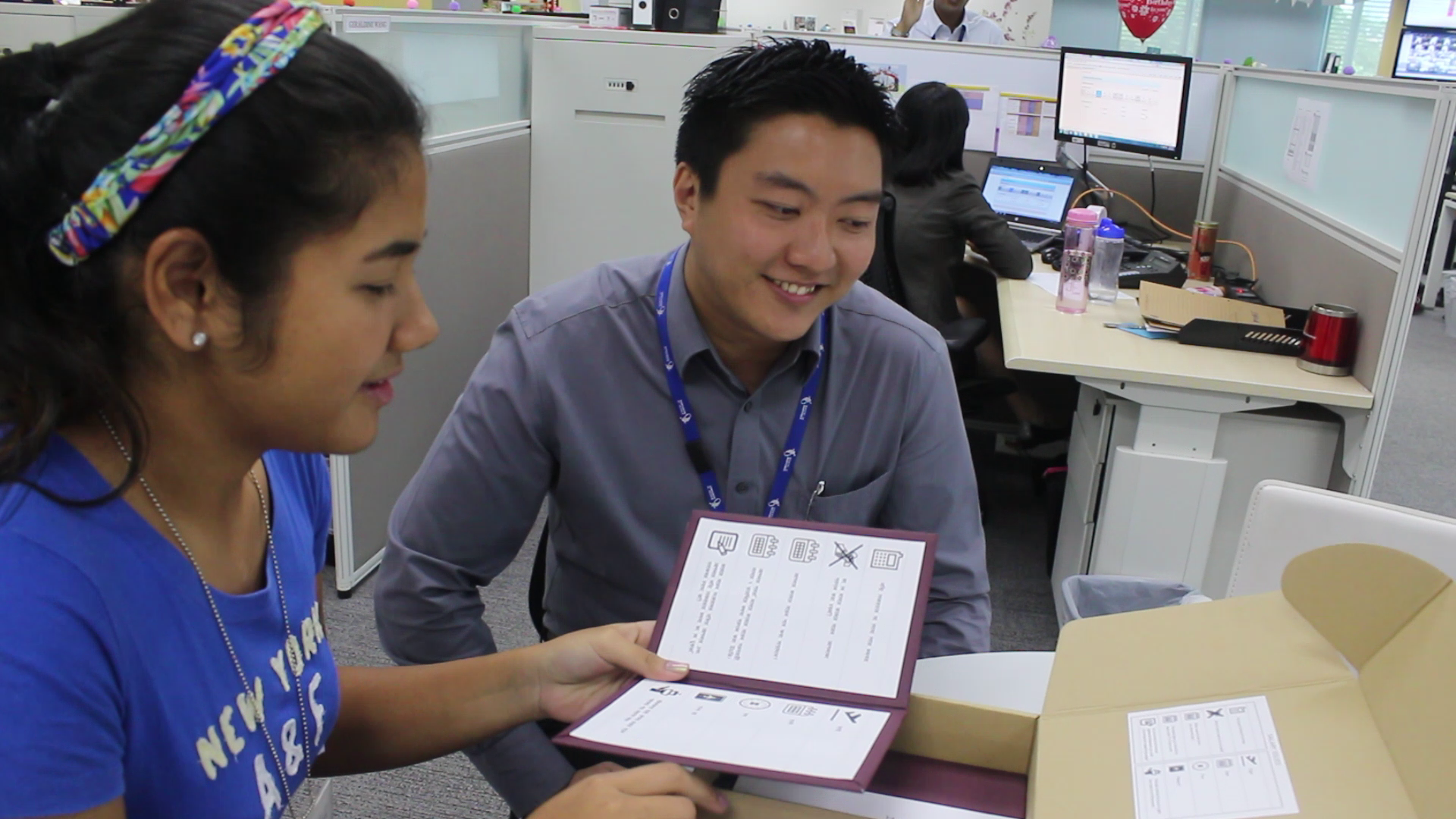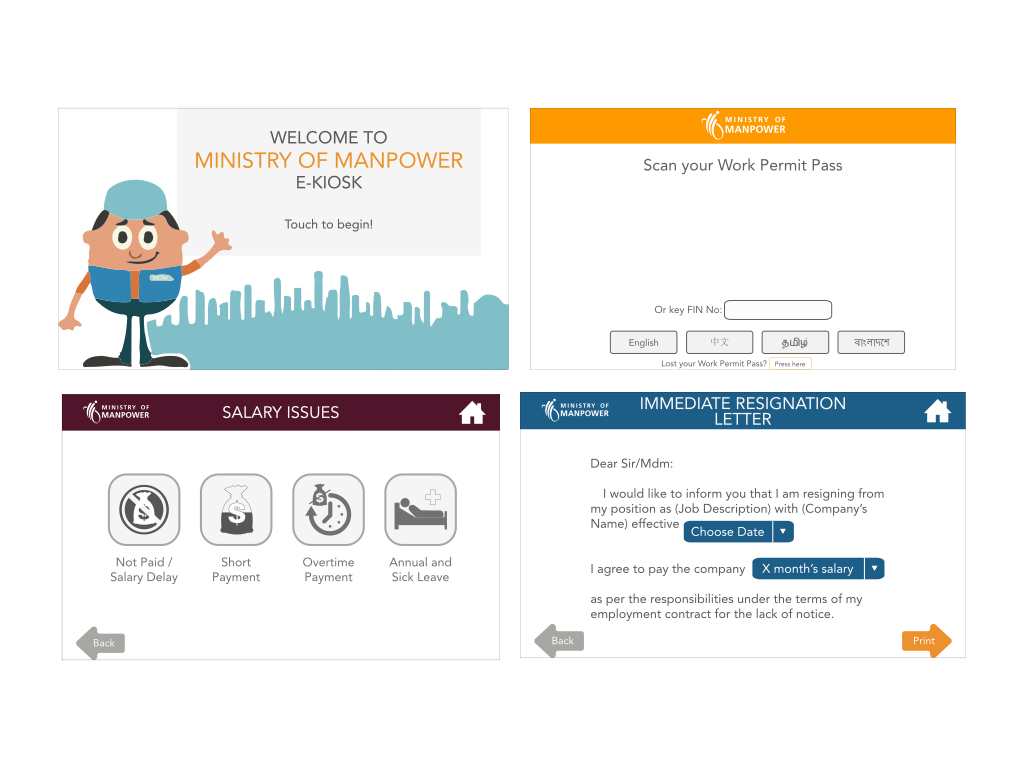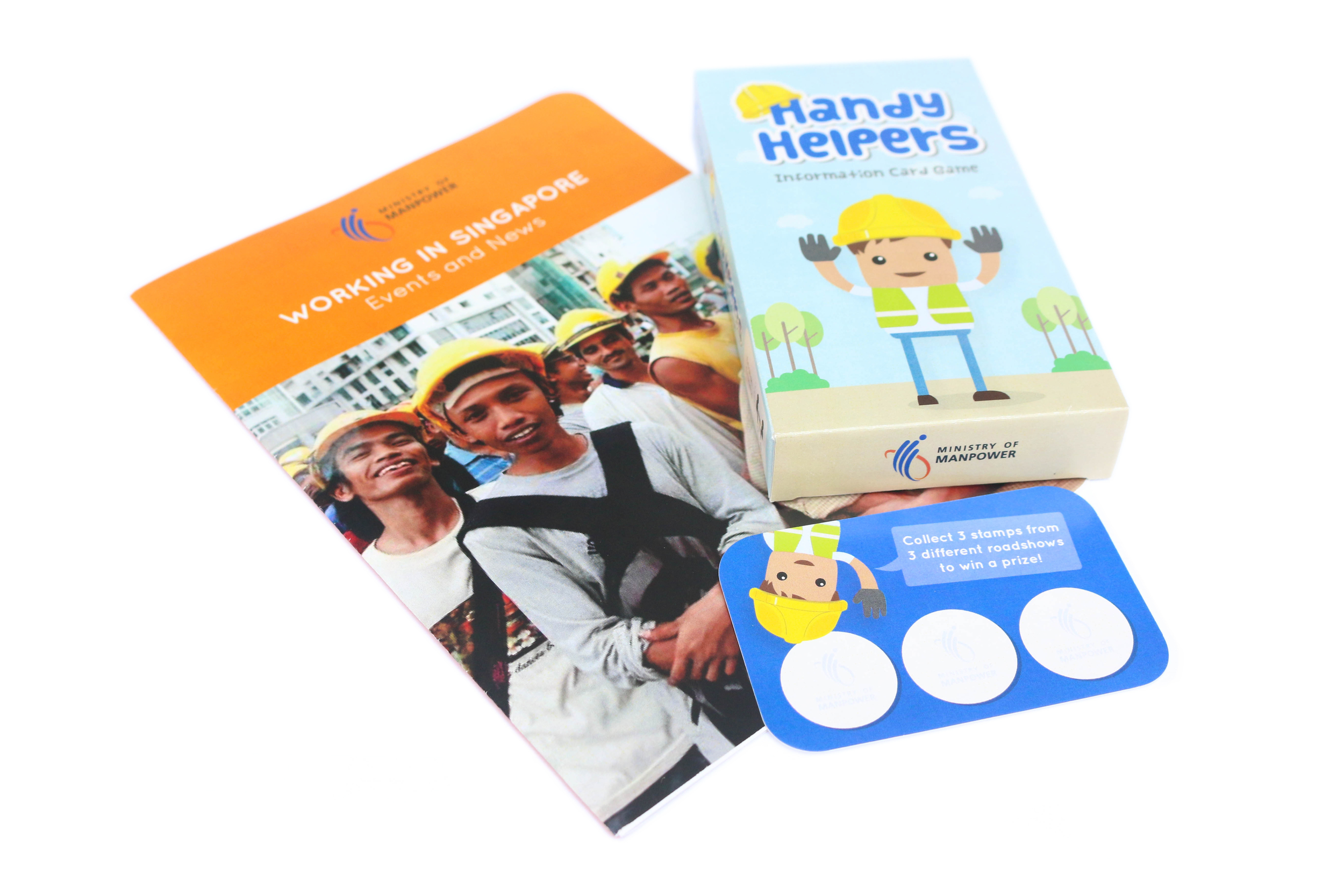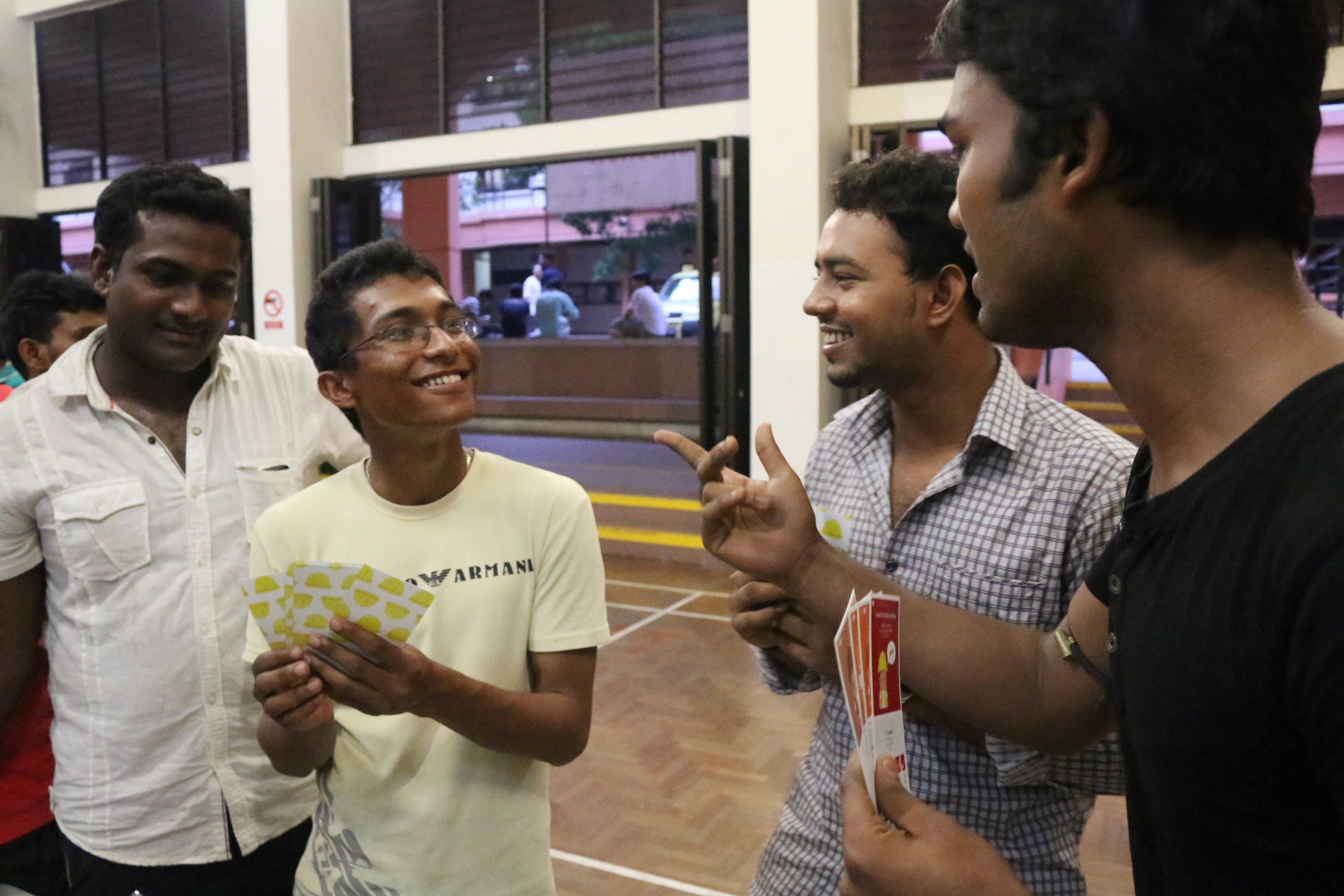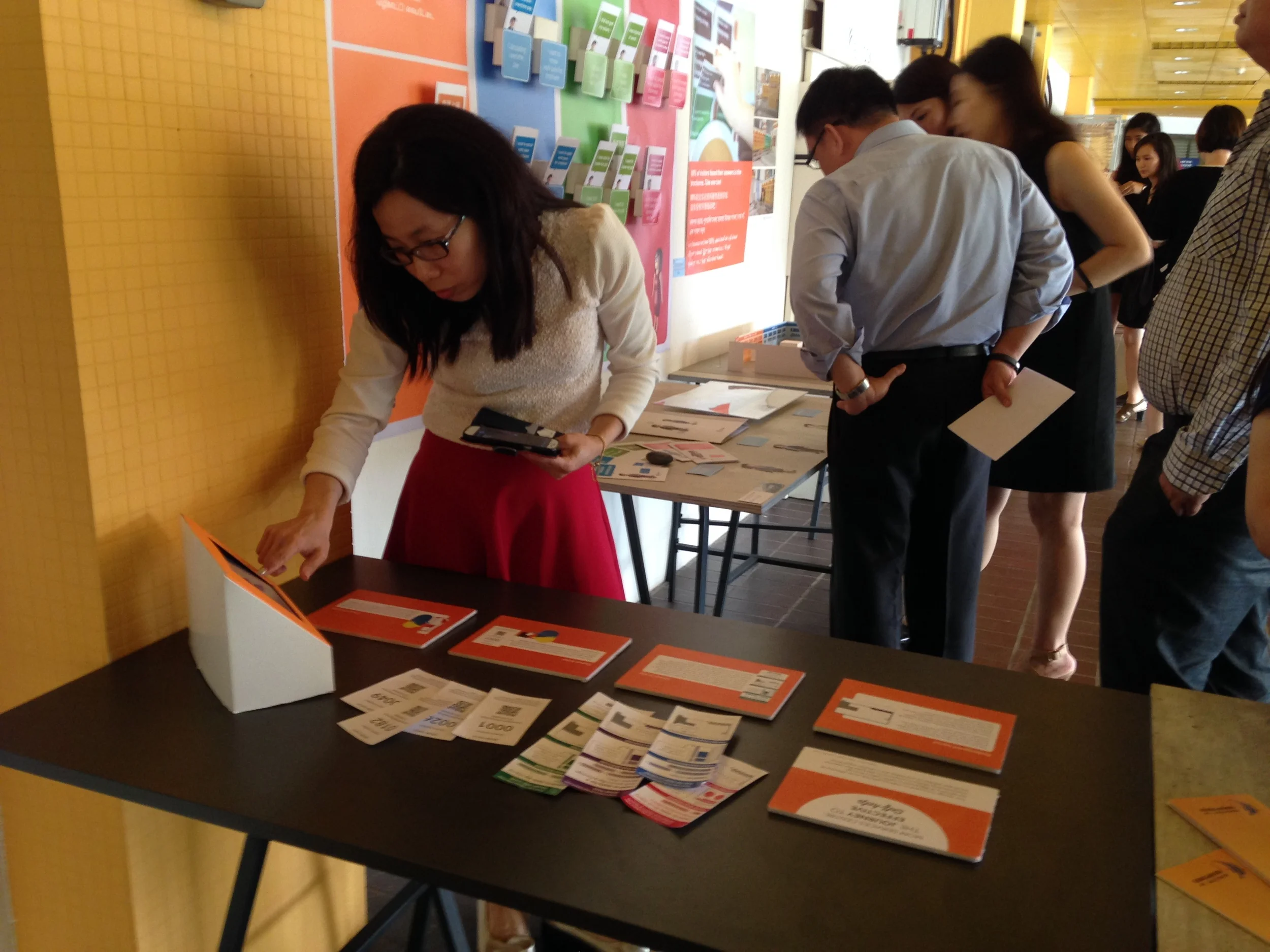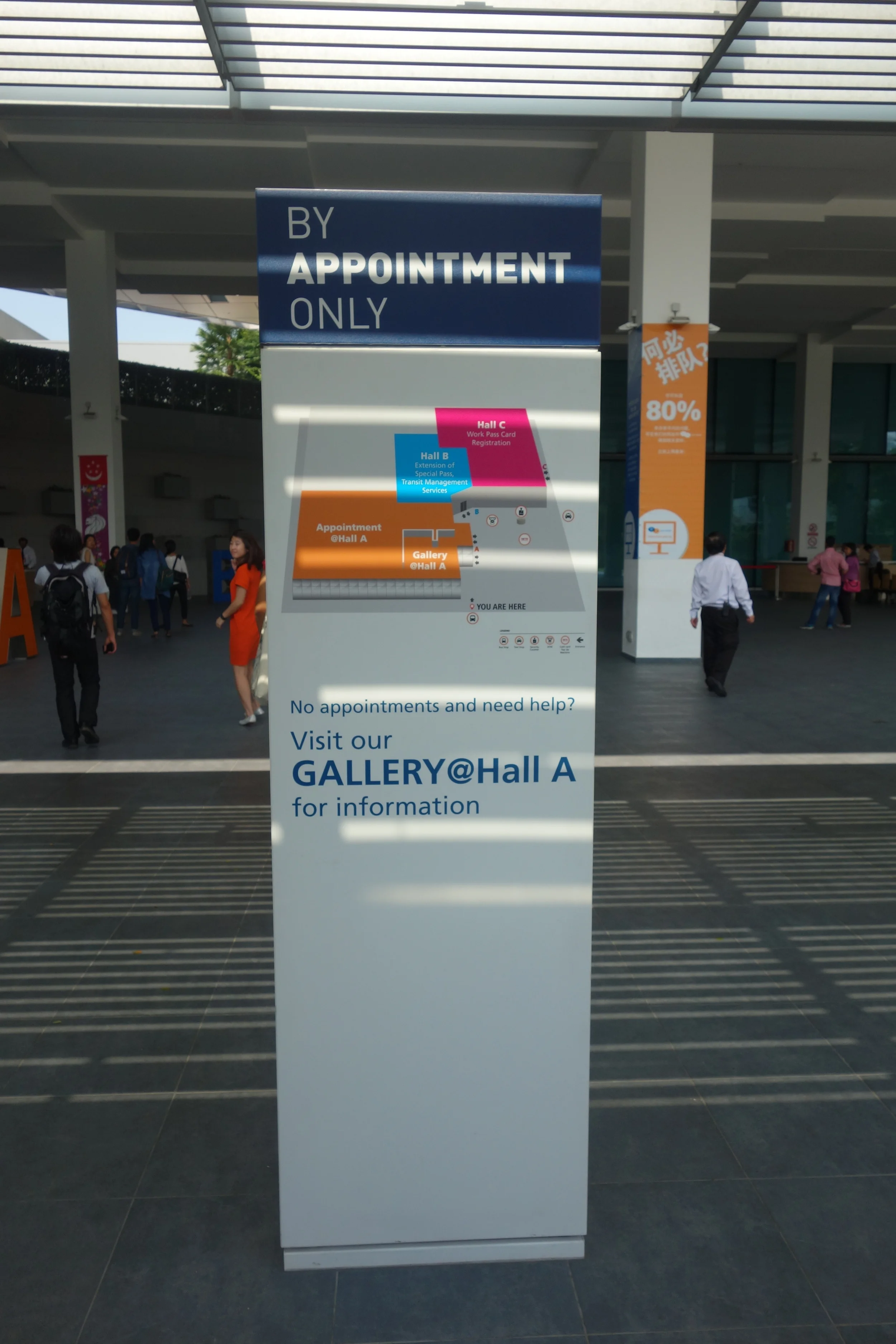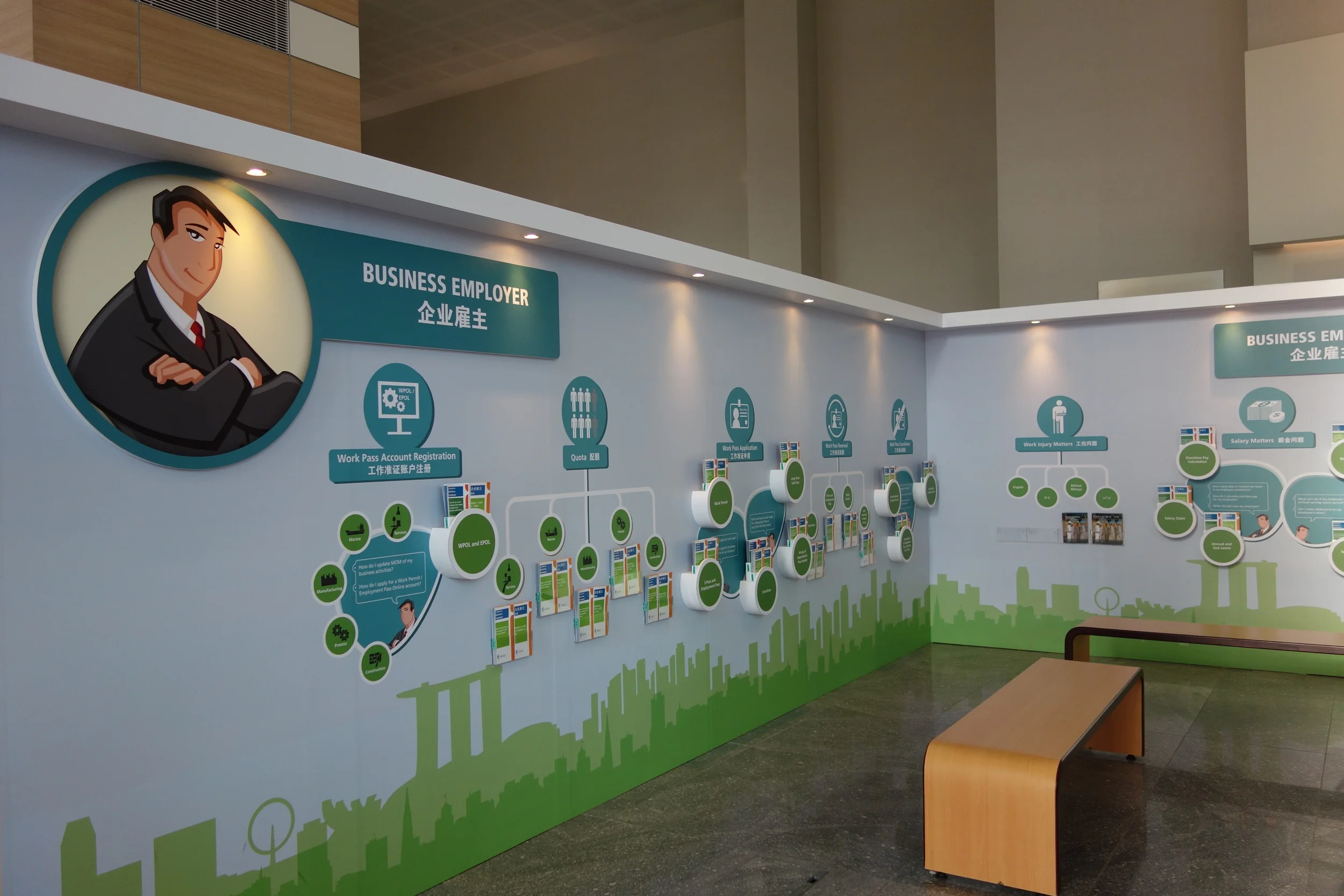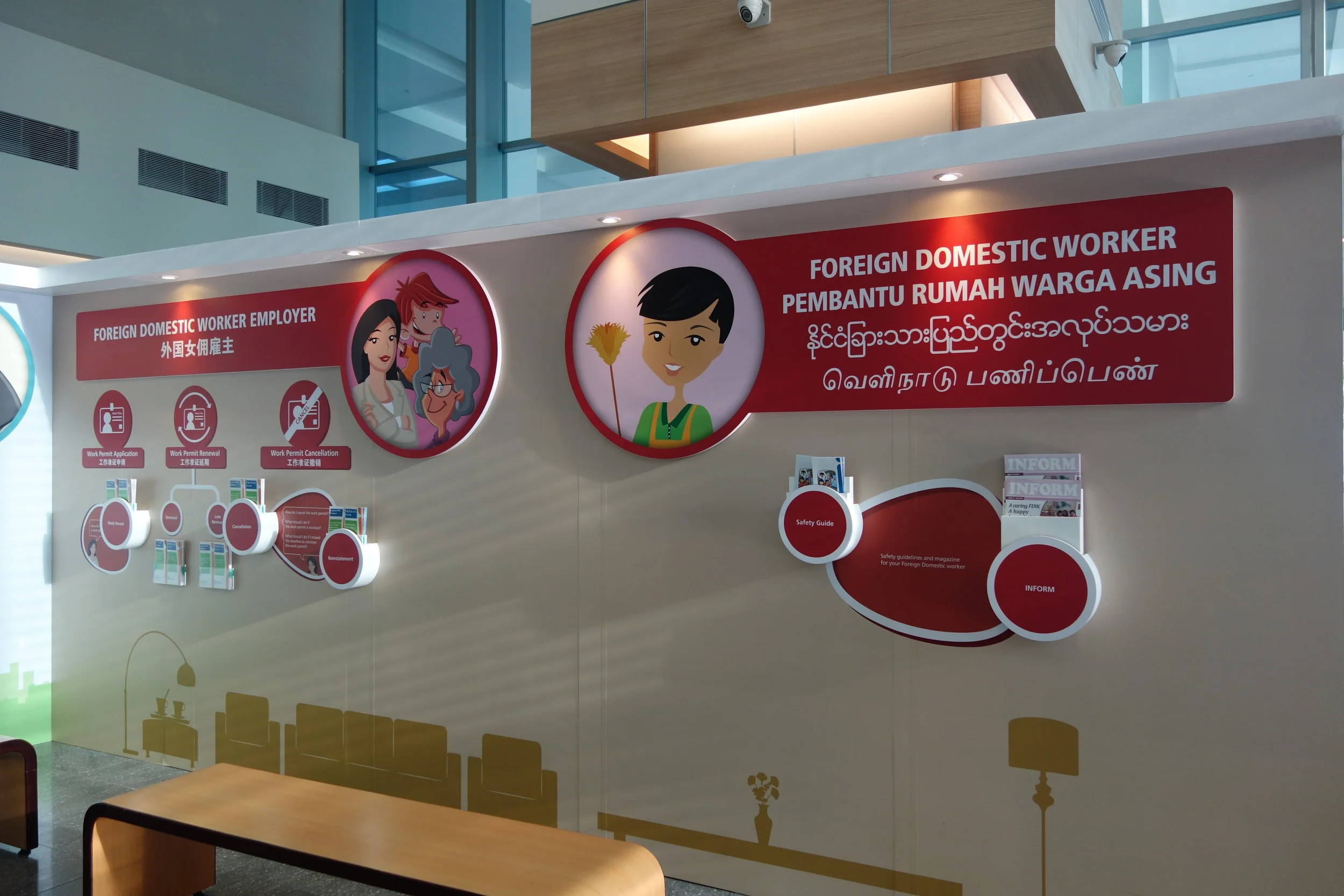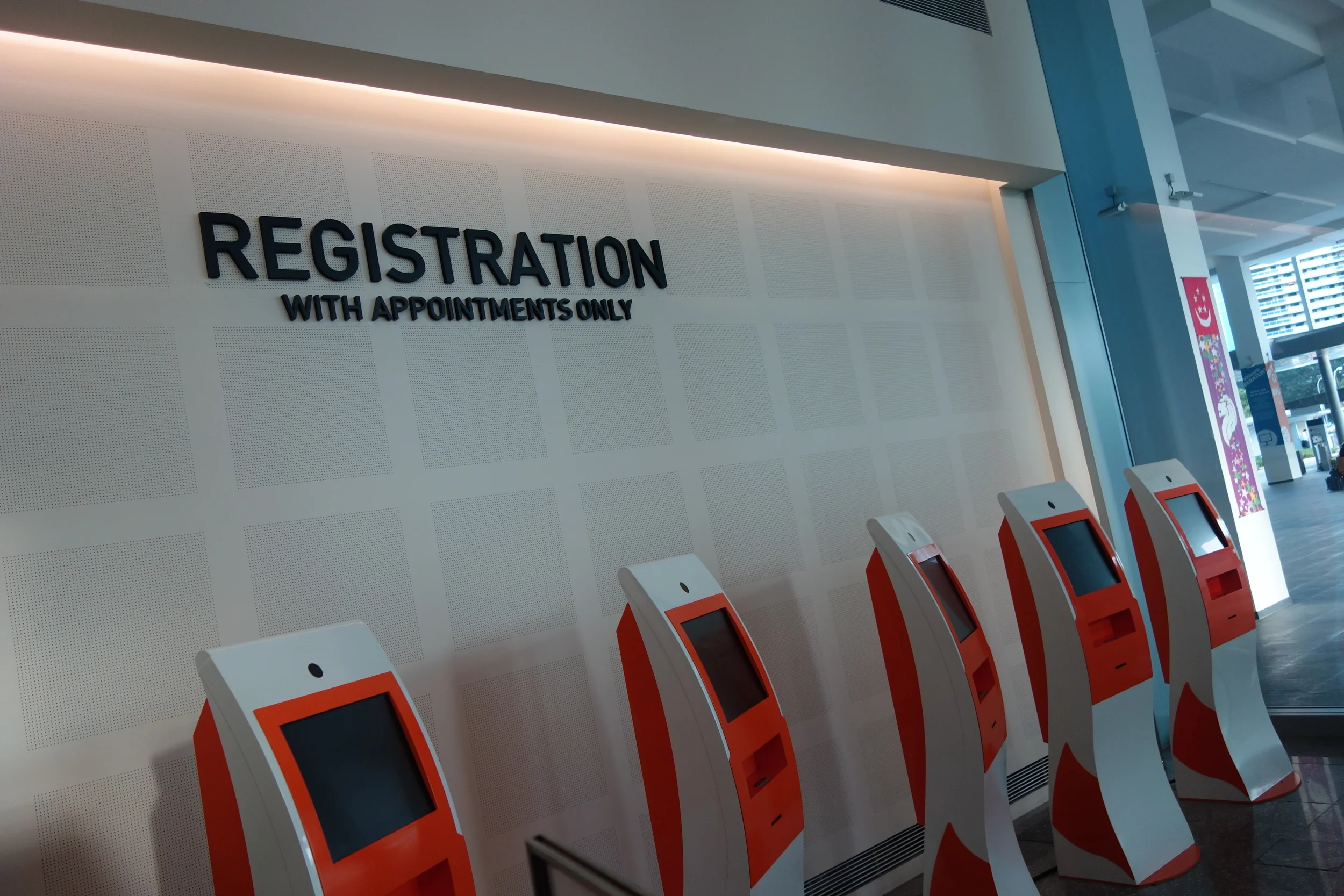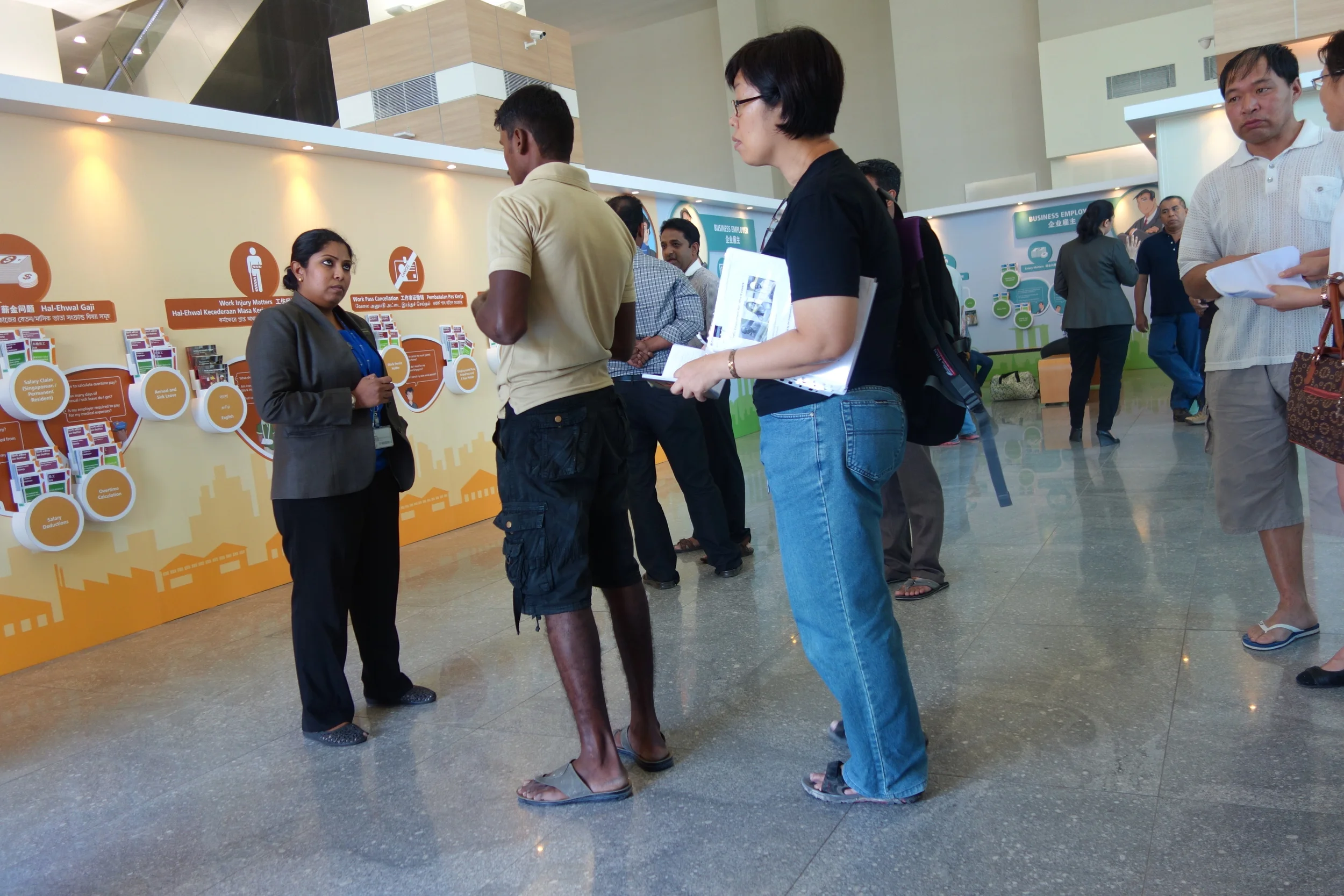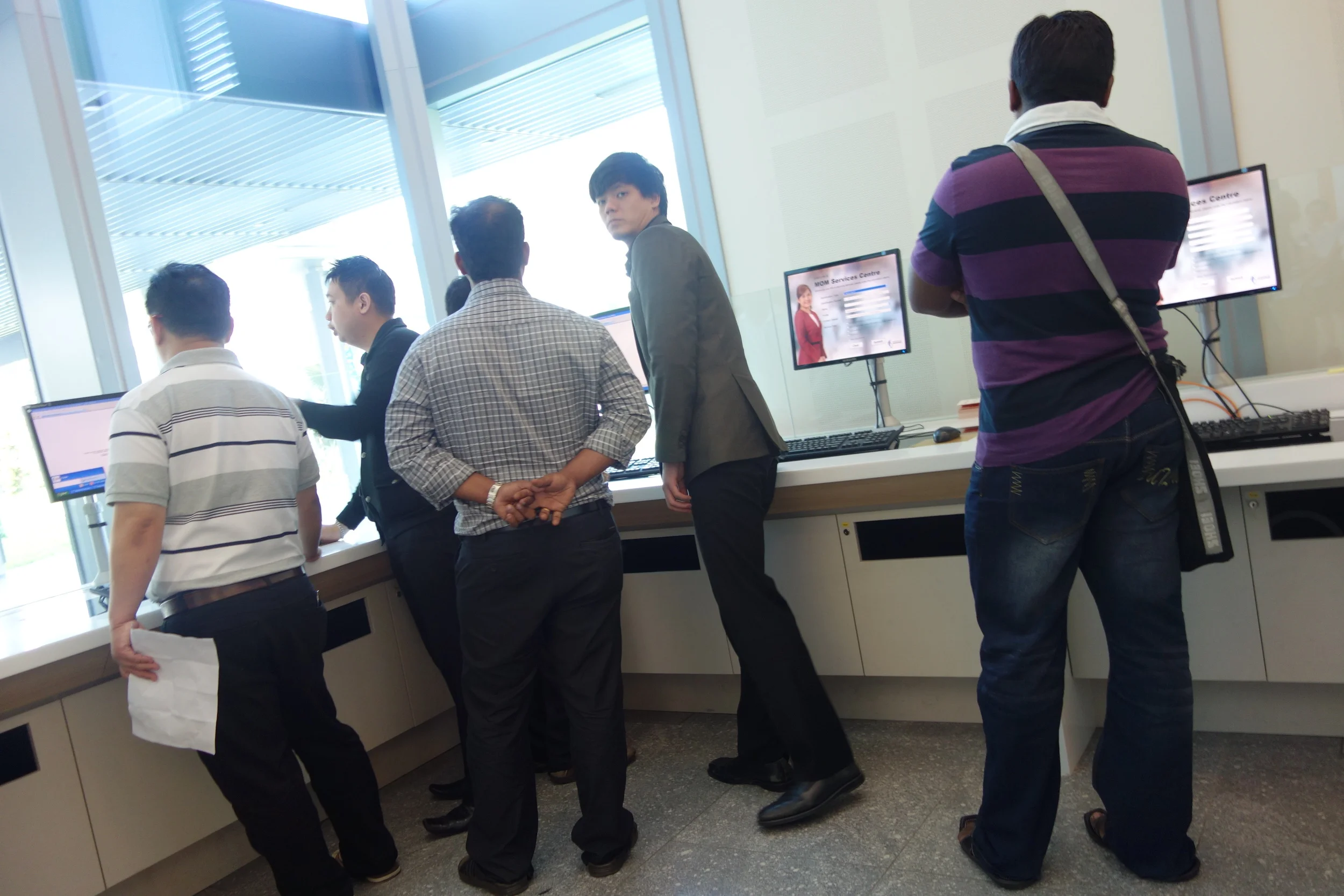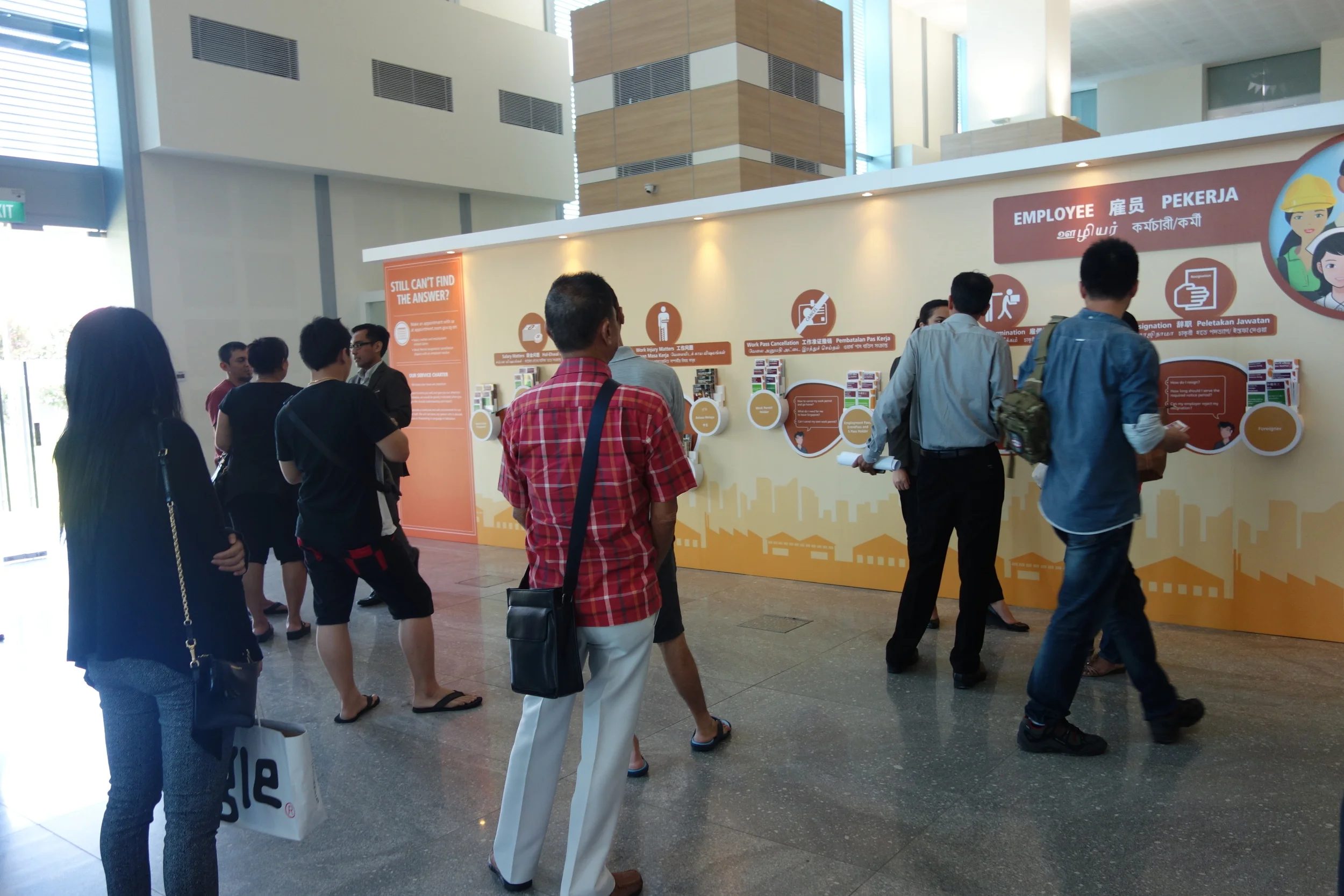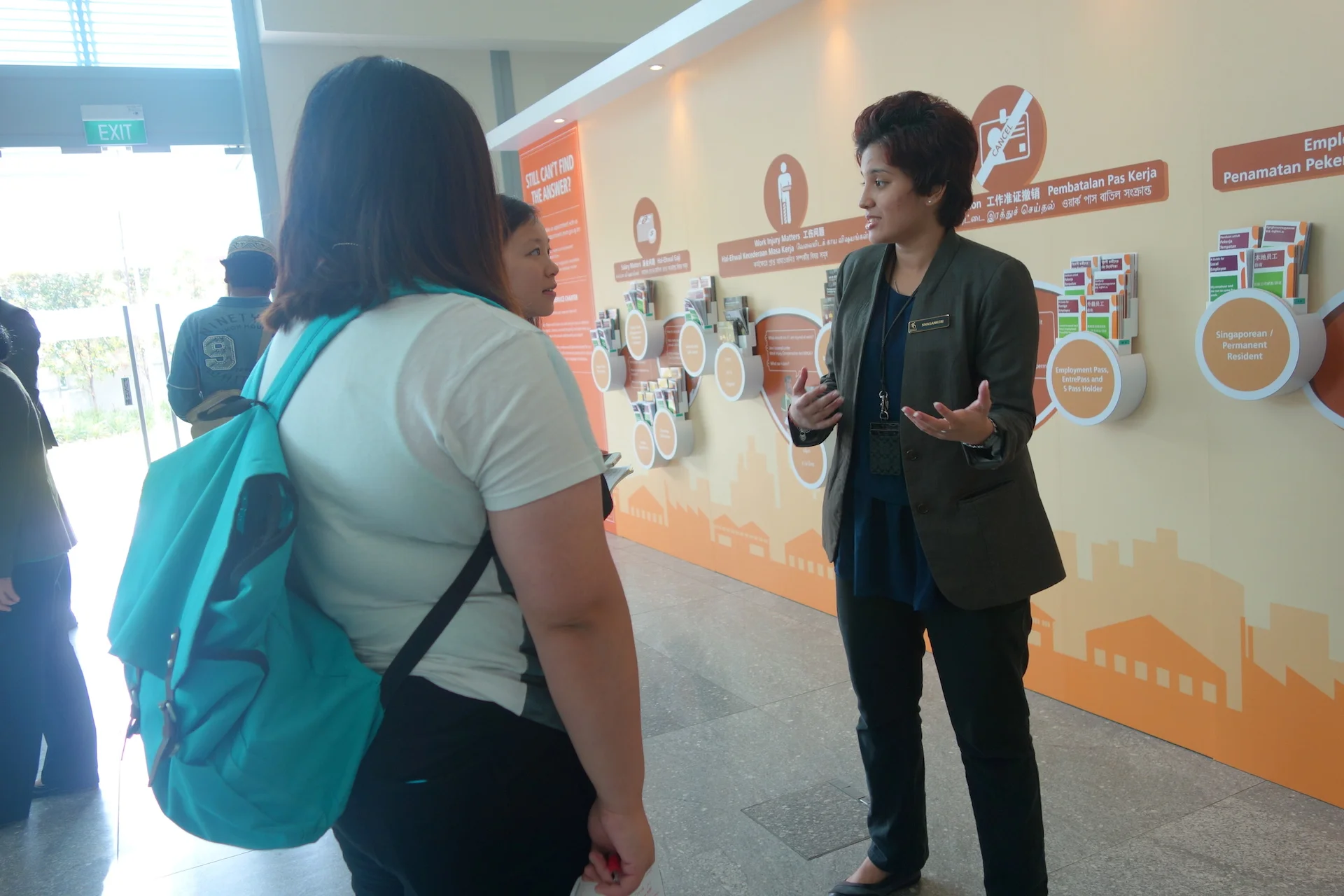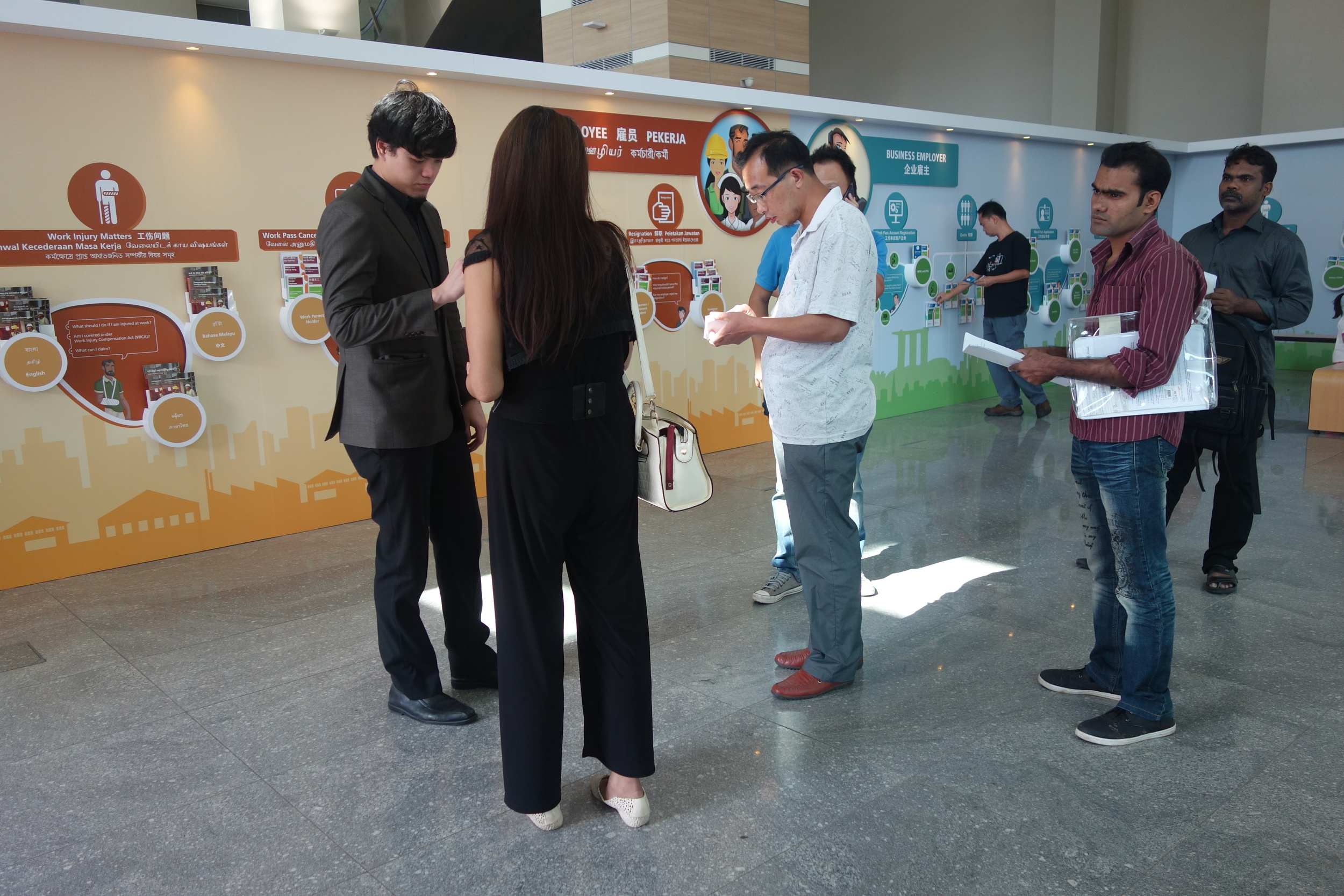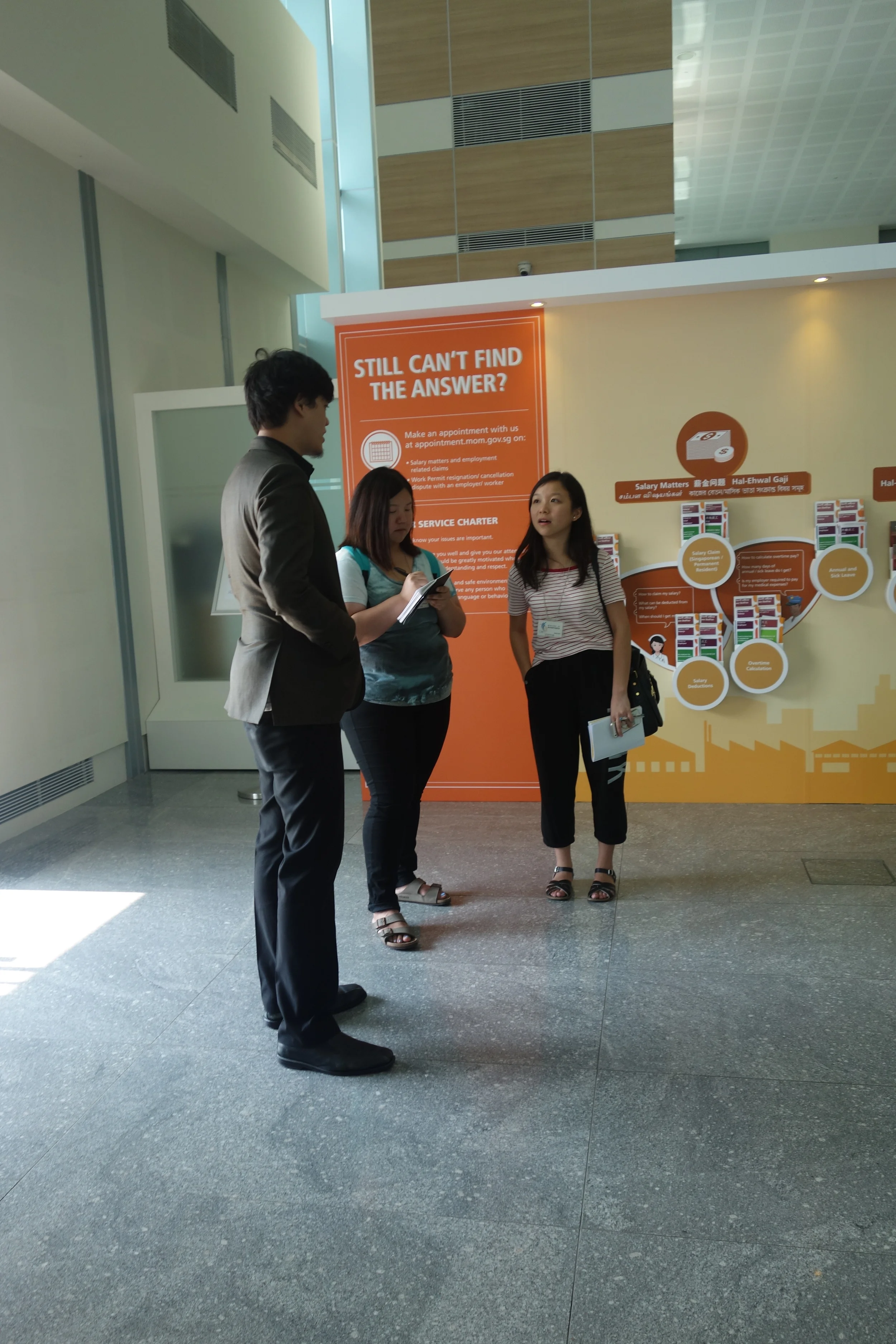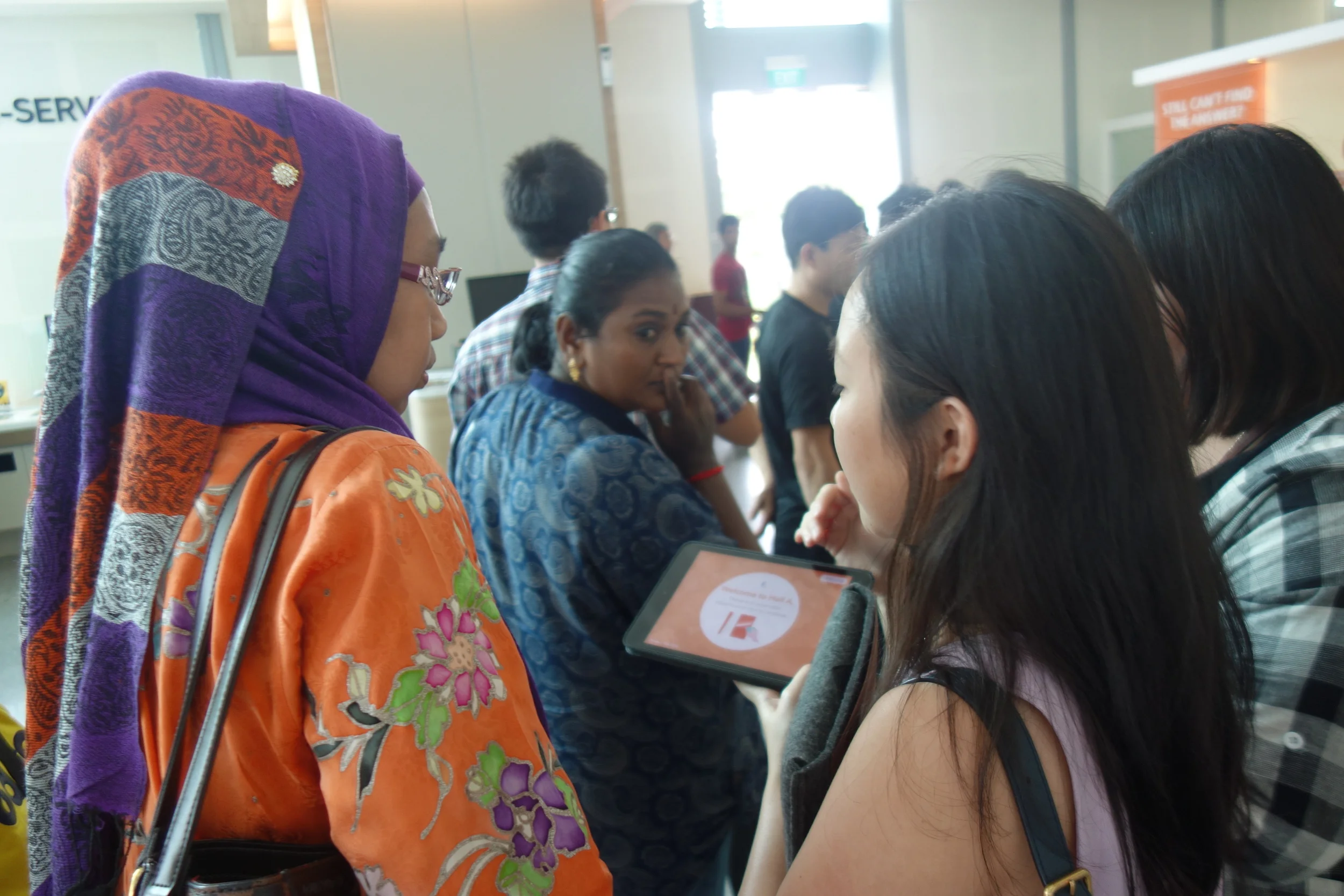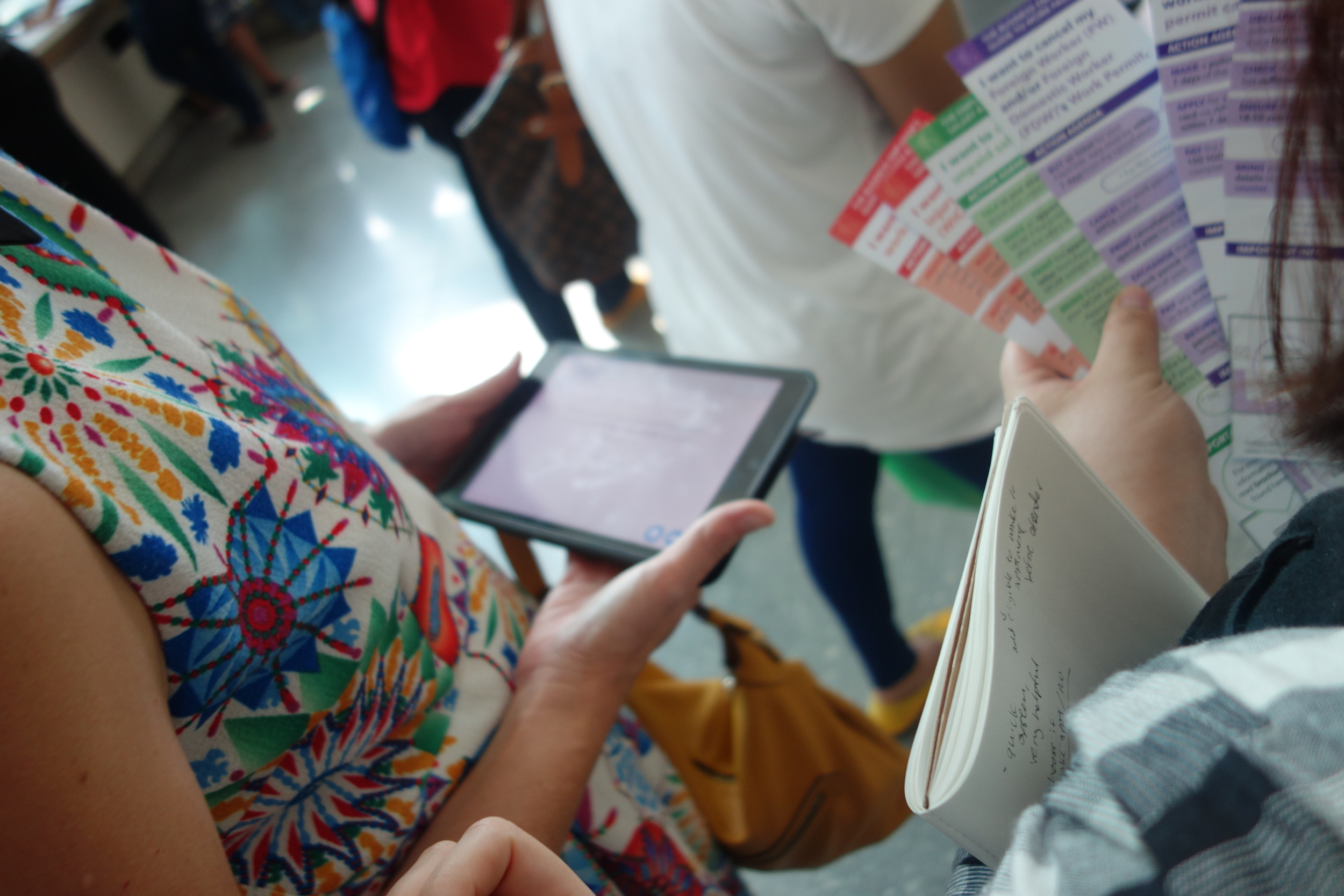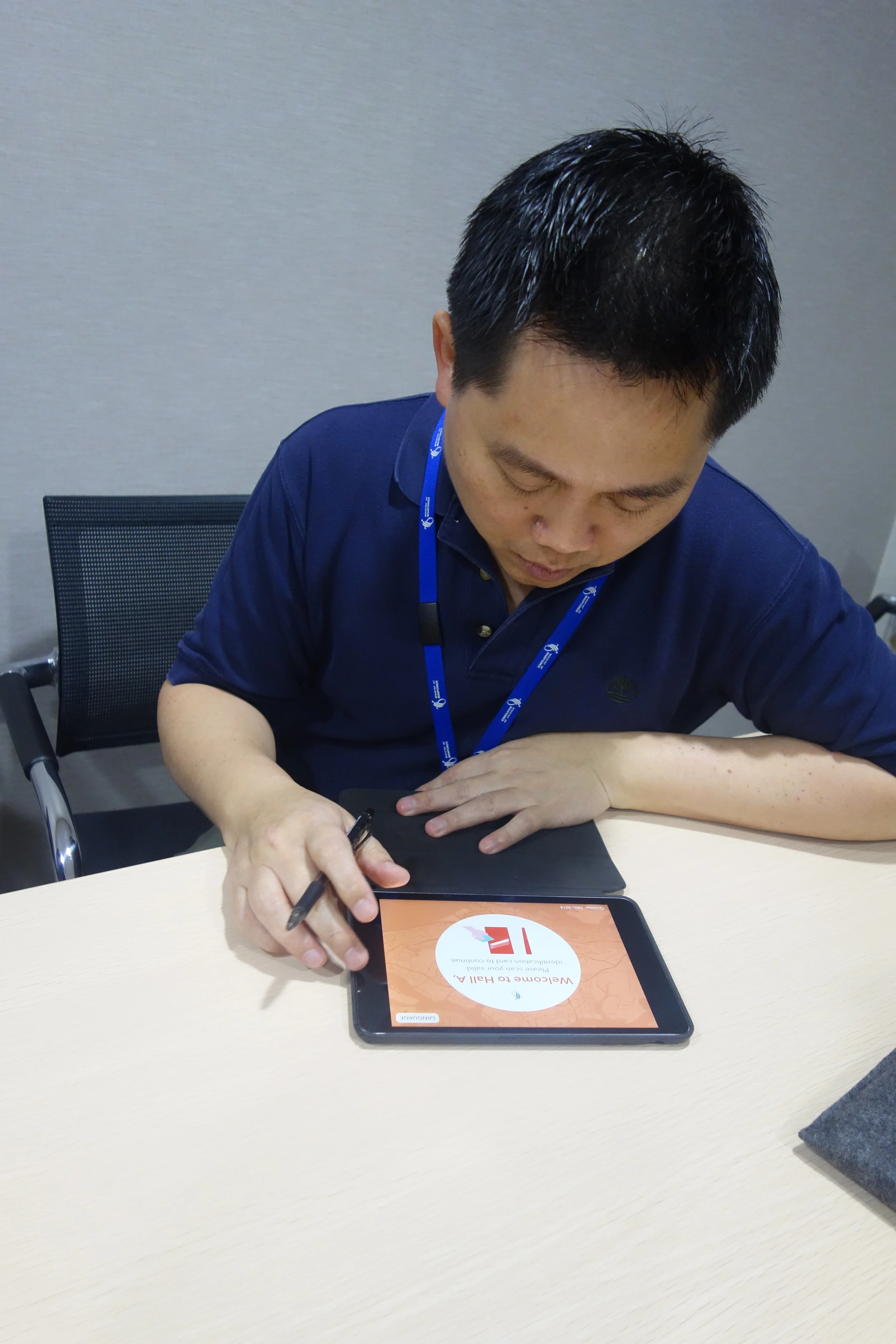RE-DESIGN OF MINISTRY SERVICES CENTER
in collaboration with Ministry of Manpower Singapore (2014)
In December 2013, Ministry of Manpower (MOM) opened a gallery space to replace physical counters at the Bendemeer Service Center. With the information gallery and brochures, MOM intended for customers to self-help. It was to better differentiate treatments for general enquires and the urgent ones, reducing the waiting time of customers as well as manpower costs spent responding to general enquiries. However, customers were often overwhelmed by the gallery and failed to read the brochures. They visit MOM Services Center to seek face-to-face assistance and assurance on their vague understanding of MOM’s policies and processes. As a result, they form natural queue lines around mobile service staff, instead of paying attention to the information gallery. They still require service staff to attend to them and have to wait for a long time.
NUS Division of Industrial Design, MOM Customer Responsiveness Department (CRD) and Behavioural Insights and Design Unit (BDU) launched a collaborative project to tackle this issue by applying service design. The project aimed to enhance self-help for customers, improve customers’ satisfaction with MOM front-line services and MOM’s manpower efficiency.
